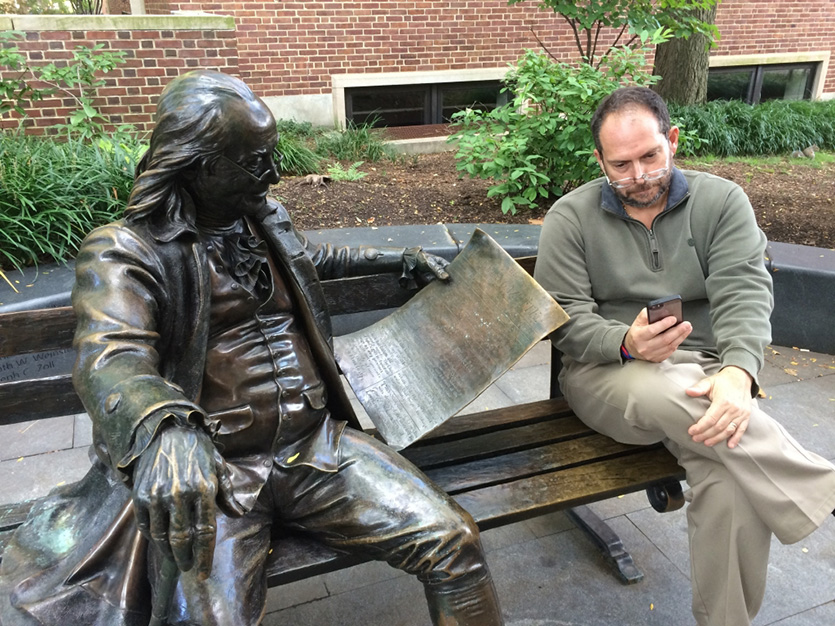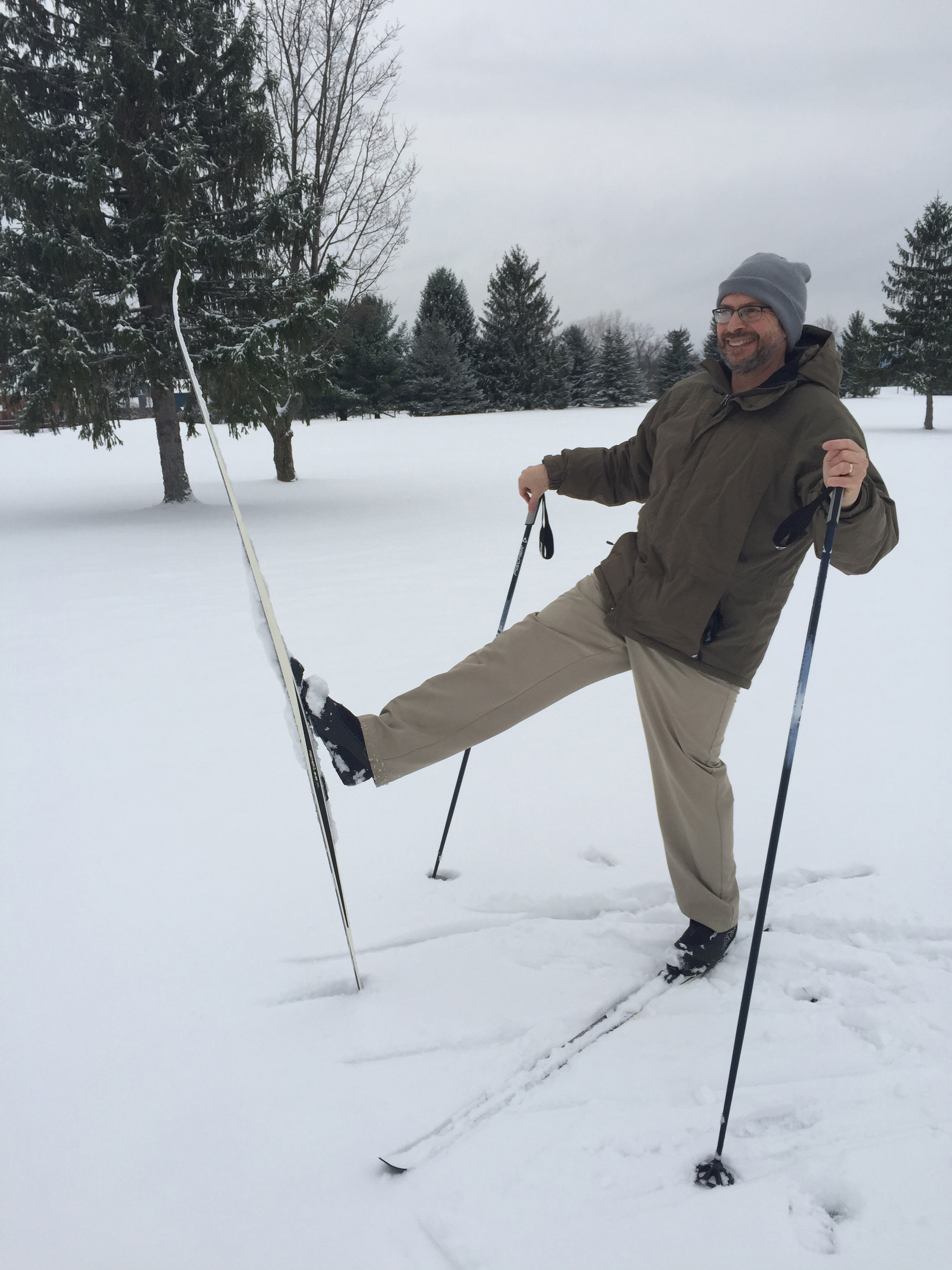
Jonathan Lunine
Scientist - Cornell Center for Astrophysics and Planetary Science
I was born in New York City.
When I was a teenager, probably 13 or 14, I read a book review in Sky & Telescope of "The Cosmic Connection," which was Carl Sagan's second book. It sounded good, so I bought it at a bookstore and I read it. I was totally fascinated. This book just put all the pieces together for me.
And I was such a pain, I must have been reading this book out loud in the house, so my mother finally said, 'Why don't you write to professor Sagan and tell him how excited you are about the book?' And I said, 'He's never going to reply to a junior high school student.' So she pushed me. I wrote the letter and asked him what was the best way to become an astronomer. He wrote me back, a two-page letter which really inspired me. We corresponded several times after that as well. Later, we worked together on Cassini.
The fact there was a famous planetary scientist with the vision laid out in his book, who would communicate with a junior high school student, really impressed me. It opened the door to make me realize I could really be a planetary scientist.
When you are in college, you tend to focus on the academic part. I was a mainstream physics and astronomy major. At that point, taking the courses, I could have ended up doing anything in astronomy, including looking through telescopes. But in my junior year - I was a still a subscriber to Sky & Telescope - I picked up the latest issue on the way to my stellar atmospheres class and the cover had an approach picture of Jupiter from Voyager 1. This was 1979. And I just stared at that picture. I hadn't see anything so clear and so beautiful as that. Much better than Pioneer or ground based telescopes. And at that point, I thought to myself this what I really want to do -- I want to work with these planetary spacecraft. That was my trajectory toward getting involved in space missions.

I was asked to help out with the Ultraviolet Spectrometer (UVS) solar occultation of Triton. This was 1989, Voyager 2's encounter with Neptune. The UVS data were very interesting, but to be honest I snuck over to where the imaging team was and watched these incredible pictures of Triton come in. And I thought that was totally cool.
Carl Sagan certainly inspired me. I would say that, of all the astronomers of that generation, really he was the one. In graduate school, my thesis advisor, David Stevenson, was an inspiration. He was so good at physics and so focused and able to really get to the heart of these problems. He really taught me how to do science. In the early 1980s, Charles Elachi invited a bunch of people to brainstorm about what a Titan radar should be like. I got involved and that was one of my early entries into Cassini. Charles has been an important inspiration ever since.
I am the David C. Duncan Professor in the Physical Sciences at Cornell, which was the chair that Carl held. He was the first to hold that chair. I am currently the director of the Cornell Center for Astrophysics and Planetary Science.. So those are the administrative things. Of course I teach. I have graduate students. I guide undergraduate students. My research component is strongly focused on planetary missions and what we learn from them. I have always had an astrophysical component in my research. I have worked on brown dwarfs, failed stars. That sort of morphed into working on exoplanets when those were discovered. I have an involvement in James Webb Space Telescope, as an interdisciplinary scientist not only for solar system, but actually extrasolar planets.
Probably the most magical moment was when the Huygens probe successfully returned its data after landing on Titan, and we were about the get the images - the first images of the surface of Titan that anyone had seen close up. It was night. It was dark, winter in Darmstadt, Germany. There were about 20 of us in trailer reserved for the imaging team, led by Martin Tomasko of the University of Arizona.. The pictures start coming down. They are flashed on a screen as thumbnails, a couple of hundred of them total. They were sort of randomly ordered, one every second. Some were featureless, but then suddenly you'd started seeing the haze clear. You'd see a landform. You'd see gullies. You'd see what looked like islands.
No human had ever seen this landscape before. And the 20 of us were the ones who were seeing it exclusively. And we were all screaming with excitement. And for a period of maybe 20 minutes, half hour, we were the only ones to see this alien world.
We spent the rest of the night putting these images, these small pictures together, into a mosaic. It was kind of an eerie experience. It was a totally alien environment. Assembling this jigsaw puzzle of little pieces was a very interesting exercise - almost, I have to say, creepy. The more we pieced together the more alien it looked.
Make contact with someone in the field. If you are a high school student, write to a professional planetary scientist. Not all will write back. But just be persistent. Make that personal contact. Ask them how they got into the field. Try to see a potential model for yourself.
You really have to do the physics and geology and chemistry courses. The academics are so important that you can't skimp on those. That's really crucial.
Be persistent. You've got to recognize that there are ups and downs and there are more downs than ups. Things take a lot longer than you'd like them to and you just have to be persistent.
My wife and I cross country and downhill ski. That's a lot of fun. And, in the summer, I like to bicycle. I have a fascination with history, philosophy, theology. I read those books not quite for relaxation, but as a sort of the other side of the coin - a different take on reality than science.
Planetary science is a global profession.

